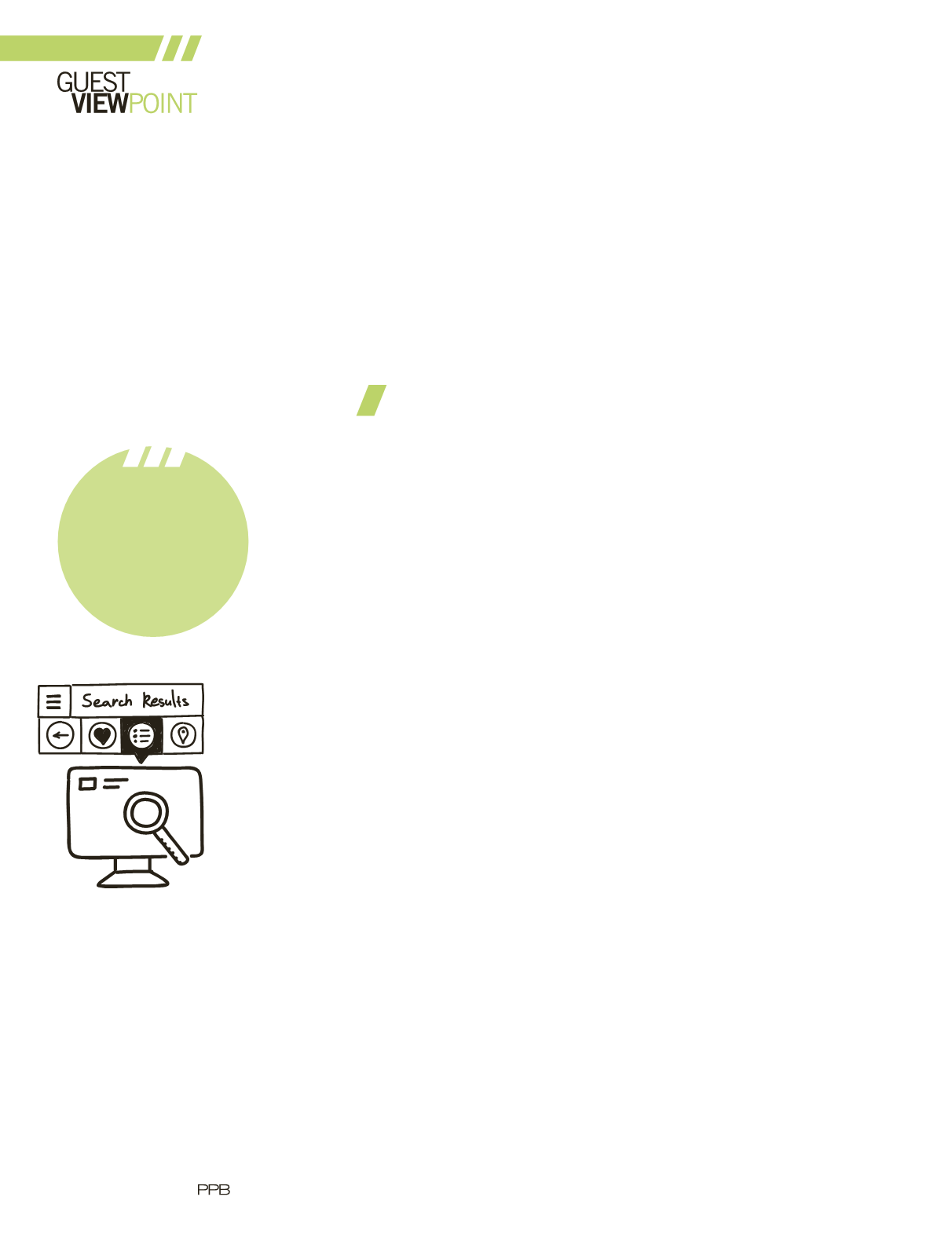

N
on-product websites were
called “brochure-ware”
back in the ’90s and were the only
type of website anyone knew how
to build. Shopping sites came next
but were originally available only
to businesses with large budgets.
Eventually, small businesses were
provided e-commerce options
to make websites useful. Not too
long ago, Google modified default
search results to provide shopping
results. See the trend?
Searching is what customers
want to do online because they
want actionable information, not
a brochure.
Don’t spend limited money
and energy on a brochure-ware
site or flip catalogs (although
both have a place in your
marketing arsenal). Instead,
spend money and energy on
ensuring your clients find what
they are searching for. Most
visitors are coming to your site
to generate ideas, not to learn
more about your company (even
though that is important too).
Pay attention to your brand as
well, but non-product content is
far behind the importance of a
great product search experience.
You need to have enough
products on your site, but not too
many. Don’t overwhelm your
customer with choices and don’t
include duplicate items. Similar
items are good, but duplicate
items at different prices are
confusing. Focus on keywords
in your descriptions and in your
e-commerce engine. If your
customer uses the term “jump
drives” to find “flash drives,” both
better be found. If not, visitors will
look to Google or your competitor
to find what they are looking
for despite how wonderful your
company appears.
Once the base need of finding
product is met, prospects and
customers may want to know
more about why they should
do business with you. Success
stories, biographies and a brief
overview of why you are different
are all very advisable. Good
marketing copy, along with a
strong social presence, will also
help drive traffic to your site.
The reality for most distributors
is that you can’t afford to build
your own search engine so you
will rely on a branded site from
a third party. When choosing a
site, focus on the product search
that returns the best results.
Adding your copy is the easy part
and while important, it is far less
important than having a great
product search. If you have to
choose, go 100-percent product
search. Fortunately, you don’t have
to choose; you can do both, but
product search is where you
should focus most of your energy.
Offline,
you
are far more
important to the relationship
than the product search. This is
why your clients email you links
to products on your competitor
sites. Online, product search is
what matters.
Dale Denham, MAS+,
is CIO of Geiger.
This article first appeared on the PromoKitchen blog in the point and counterpoint
section, Salt & Pepper. It was inspired by a post by Bill Petrie for his brandivate blog
about positioning a website. This article features a debate between distributors Dale
Denham, MAS+, Geiger, and Mark Graham, commonsku and RIGHTSLEEVE, on how
best to utilize the most essential piece of real estate in today’s marketing world: the
distributor website.
Dale
Denham
MAS+
Searching is
what customers
want to do online
because they
want actionable
information, not
a brochure.
Product Search
Vs. Storytelling
Should distributor websites feature
products and product search,
or should they tell your story?
58
|
SEPTEMBER 2016
|
GROW
















